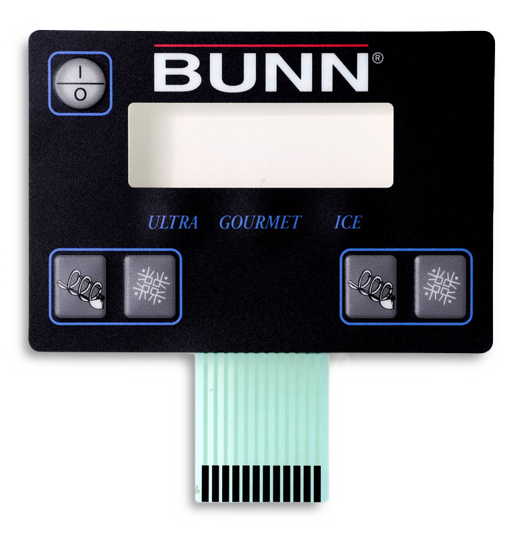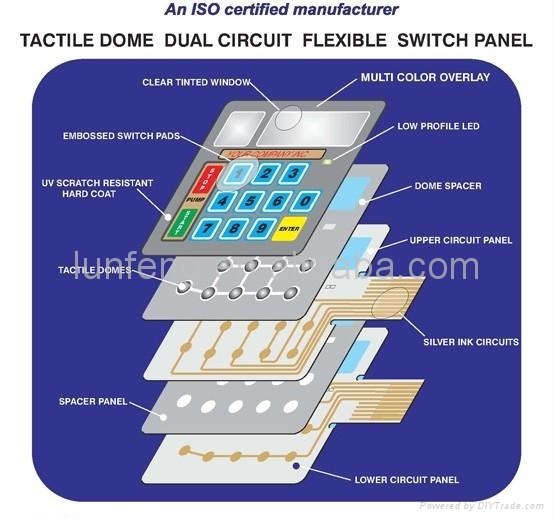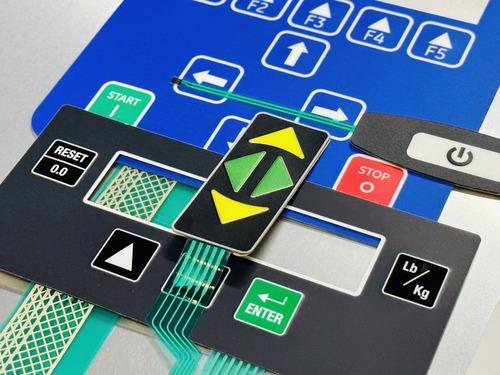How Membrane Switches Are Revolutionizing User Interface Design
How Membrane Switches Are Revolutionizing User Interface Design
Blog Article
Comprehending the Significance of Membrane Switches in Individual User Interfaces
Membrane buttons are integral elements in the style of reliable individual interfaces, facilitating not only capability but also boosting aesthetic appeal and customer communication. As we explore the future patterns and various advantages connected with Membrane technology, it becomes clear that these switches are more than just components; they stand for a merging of innovation and functionality.
What Are Membrane Buttons?

The spacer layer, which includes glue residential properties, allows for the splitting up of the circuit layer from the overlay, making sure that the button continues to be in a non-activated state until pushed. When pressure is applied to the overlay, it compresses the spacer layer, bridging the space and completing the circuit in the underlying layer. This style not only reduces the physical area required for standard mechanical buttons yet additionally enhances the resilience of the device, as Membrane buttons are normally immune to dirt, moisture, and other ecological variables.
Typically discovered in applications varying from customer electronic devices to clinical devices, Membrane switches are important to modern-day technology, offering a efficient and user-friendly interface that lines up with contemporary layout requirements.
Advantages of Membrane Switches
While numerous button innovations exist, Membrane Switches deal distinctive advantages that make them particularly desirable in various applications. One of the primary advantages of Membrane buttons is their small design, which enables space-saving implementations in tools where property is restricted. Their thin profile not just improves visual appeal yet likewise assists in light-weight building.
One more substantial benefit is their resistance to environmental variables. Membrane switches are commonly sealed versus dampness, dust, and pollutants, making them ideal for use in demanding settings, such as clinical tools and commercial tools. This longevity expands the life expectancy of the button, reducing maintenance prices and enhancing integrity.
Additionally, Membrane buttons can be personalized to fulfill particular design needs, integrating one-of-a-kind graphics and colors that enhance customer interaction. Their responsive responses alternatives can likewise be customized to provide an enjoyable customer experience. Furthermore, Membrane switches are cost-efficient, particularly in high-volume applications, as they can be produced successfully.
Applications in Various Industries

In the consumer electronics sector, Membrane switches are prevalent in tools such as microwaves, cleaning makers, and push-button controls. Their responsive feedback and visual options boost individual experience while providing a streamlined, contemporary appearance. Furthermore, automotive suppliers use Membrane buttons in control panel controls and infotainment systems, where room is restricted, and user involvement is essential.
In addition, the industrial market leverages Membrane switches in control panels for equipment and tools, permitting instinctive procedure in commonly extreme atmospheres. Their resistance to chemicals and dampness ensures long life and integrity in these applications. On the whole, the flexibility of Membrane Switches adds considerably to their widespread usage, making them crucial in different technical domains.
Layout Factors To Consider for Membrane Switches

When making Membrane switches, a number of essential considerations should be considered to make sure optimal functionality and user experience. To start with, the selection of products is important; selecting durable, premium substrates can enhance the switch's durability and resistance to ecological aspects such as moisture and temperature level fluctuations.
Secondly, the layout of the visuals overlay ought to focus on quality and ease of use. Icons and message must be readable, and the design must promote intuitive communication (membrane switches). Additionally, responsive feedback is important; integrating a tactile dome or various other devices can enhance the customer experience by offering physical confirmation of activation
One more important factor is the switch's electrical performance. Designers must guarantee that the conductive traces are properly made to reduce resistance and stay clear of signal interference. This involves assessing the required actuation force and guaranteeing compatibility with the electronic parts they will certainly interface with.

Future Fads in Membrane Innovation
As technology remains to advance, Membrane switches are poised to evolve substantially, driven by innovations in products and making methods. One arising pattern is the unification of sophisticated products, such as flexible substratums and conductive inks, which enhance resilience and reduce the general weight of Membrane switches. These materials not only boost the responsive action but also enable the design of switches that can withstand harsher ecological problems.
Moreover, the assimilation of touch-sensitive modern technologies is transforming traditional Membrane Switches into more interactive user interfaces. Capacitive touch sensors embedded within Membrane switch panels can offer a more responsive and intuitive user experience, straightening with the expanding need for streamlined, contemporary designs in consumer electronic devices.
In addition, developments in printing techniques, such as digital and 3D printing, make it possible for quick prototyping and modification of Membrane switches. This versatility enables producers to respond more promptly to market demands and consumer preferences.
Finally, sustainability is ending up being a substantial focus, with suppliers checking out environmentally friendly products and processes. As these fads unravel, the future of Membrane technology assures enhanced performance, visual allure, and ecological responsibility, solidifying their duty see page in sophisticated user interfaces across numerous sectors.
Verdict
In final thought, Membrane Switches stand for an essential component in the style of individual interfaces, combining performance with visual adaptability. As improvements in modern technology continue, the advancement of Membrane buttons is expected to more fine-tune individual interfaces, driving technology and enhancing use in an increasingly complicated technological landscape.
Membrane buttons are essential components in the design of efficient user interfaces, assisting in not only performance but additionally improving visual charm and user interaction.Membrane Switches serve as a crucial part in different individual interfaces, promoting a smooth interaction between users and digital tools.While various button innovations exist, Membrane Switches deal distinct advantages that make them particularly preferable in various applications.Furthermore, Membrane switches can be tailored to satisfy specific layout demands, incorporating distinct graphics and shades that enhance look at these guys customer communication.In verdict, Membrane Switches represent an essential component in the layout of individual interfaces, combining capability with visual adaptability.
Report this page